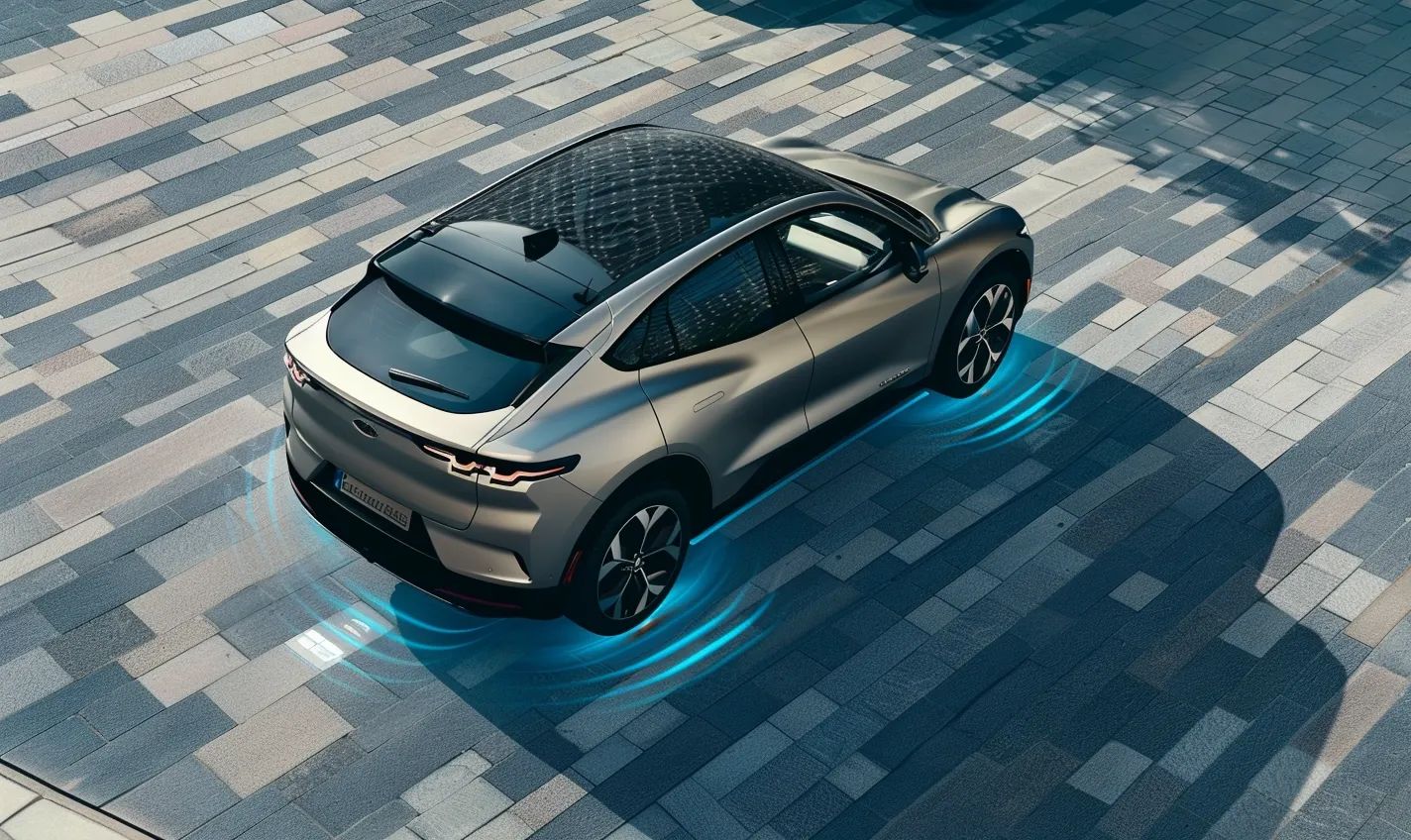Electric vehicles have gained popularity recently due to their numerous benefits, including environmental friendliness, cost savings, and reduced dependence on fossil fuels. However, regarding any vehicle, safety should always be a top priority. That’s why electric vehicle manufacturers have significantly improved safety technology, including driver assistance features.
Electric vehicle safety goes beyond just the basic features found in traditional vehicles. In addition to standard safety measures like airbags and seat belts, electric cars are equipped with innovative driver assistance features that enhance safety on the road.
One key driver assistance feature in electric vehicles is collision warning and emergency braking. Sensors and cameras in the car monitor the road ahead and can detect potential collisions. If the system detects an imminent collision, it automatically applies the brakes or alerts the driver to take action. This advanced technology can help prevent accidents and reduce the severity of collisions.
Another essential safety feature is lane-keeping assist. This system uses cameras to identify lane markings and monitors the vehicle’s position on the road. If the car starts to drift out of its lane without turn signals, the system will provide gentle steering assistance to help guide the vehicle back into the correct lane. This feature is handy for long drives or when the driver may be tired.
Electric vehicles (EVs) have become increasingly popular as people search for more sustainable, eco-friendly transportation options. With technological advancements, EVs have emerged as a viable alternative to traditional internal combustion engine vehicles. However, as with any mode of transportation, safety is of utmost importance.
Understanding Electric Vehicle Safety Features makes drivers feel secure and confident. In addition to built-in safety mechanisms, EVs are equipped with advanced driver assistance features that aid in avoiding accidents and enhancing the overall driving experience.
Understanding Electric Vehicle Safety Features
1. Built-in Safety Mechanisms:
Electric vehicles have several safety features that reduce the risk of accidents and protect passengers. These include:
– Anti-lock Braking System (ABS) to prevent wheels from locking up during sudden braking.
– Electronic Stability Control (ESC) that assists in maintaining vehicle control during challenging driving conditions.
– Traction Control System (TCS) that prevents wheels from spinning on slippery surfaces.
– Multiple airbags to cushion occupants in the event of a collision.
2. Crash Test Ratings:
Before purchasing an electric car, it is essential to check its crash test ratings. Organizations such as the National Highway Traffic Safety Administration (NHTSA) and the Insurance Institute for Highway Safety (IIHS) conduct rigorous crash tests to assess the safety performance of vehicles. These ratings provide valuable insights into how an EV performs in various crash scenarios.
3. Creep and Hold Mode:
Electric vehicles often come with a “creep” feature that allows the car to move slowly forward or backward when the foot is off the brake pedal. This feature simulates the behavior of a traditional automatic transmission vehicle and helps drivers transition smoothly to EVs.
4. Regenerative Braking System:
One of the unique features of electric cars is regenerative braking, which converts the vehicle’s kinetic energy into electrical energy to recharge the battery. This system not only improves efficiency but also aids in extending the range of the EV.
5. Low Center of Gravity:
EVs typically have a lower center of gravity than conventional cars due to the placement of heavy battery packs on the vehicle’s floor. This design feature enhances stability and reduces the risk of rollover accidents.
6. Emergency Response Features:
Manufacturers design EVs with emergency response features to assist first responders in case of an accident. These features include easy-to-access emergency shut-off switches and clearly labeled high-voltage components to ensure the safety of both passengers and responders.
Driver Assistance Features for Electric Vehicles
1. Blind Spot Monitoring:
This feature uses sensors to detect vehicles in the driver’s blind spots and alerts them through audio or visual signals, reducing the likelihood of accidents during lane changes.
2. Lane Keeping Assist:
Lane Keeping Assist technology helps drivers stay within their lane by providing gentle steering inputs or vibrations when the vehicle unintentionally drifts out of its lane.
3. Adaptive Cruise Control:
Adaptive Cruise Control maintains a set distance from the vehicle ahead and automatically adjusts the speed of the EV to match the traffic flow, improving safety and reducing driver fatigue.
4. Forward Collision Warning:
Forward Collision Warning systems use sensors to monitor the road ahead and alert the driver if a potential collision is detected, allowing them to take necessary actions to avoid a crash.
5. Parking Assist Systems:
Parking Assist Systems assist the driver in maneuvering the vehicle into tight parking spots. These systems use sensors and cameras to detect obstacles and provide visual and audio guidance.
In conclusion, electric vehicles have advanced safety features and driver assistance technologies that enhance driver confidence and overall safety. Understanding these features and utilizing them effectively is essential for a safe and enjoyable driving experience in an electric car. Stay tuned for further blogs where we delve deeper into each specific feature. Happy driving in your electric vehicle!

Understanding Electric Vehicle Safety Features
When it comes to driving an electric vehicle, safety is always a top priority. Fortunately, modern electric cars come equipped with various safety features to ensure a secure driving experience. From built-in safety mechanisms to advanced driver assistance features, here’s everything you need to know about electric vehicle safety.
Built-in Safety Mechanisms
Electric vehicles are designed with various built-in safety mechanisms to protect drivers and passengers. These mechanisms include:
– High-strength structures: Electric cars use solid and durable materials to enhance passenger safety during a collision.
– Advanced airbag systems: Electric vehicles are equipped with advanced airbag systems that can detect the severity of a crash and deploy the appropriate airbags to protect occupants.
– Fire suppression systems: Some electric vehicles have fire suppression systems to extinguish potential fires quickly and effectively.
Crash Test Ratings
Electric vehicles undergo rigorous crash testing to evaluate their safety performance. These tests assess a car’s ability to protect occupants during various collisions. Look for electric vehicles with high crash test ratings from reputable organizations such as the National Highway Traffic Safety Administration (NHTSA) or the Insurance Institute for Highway Safety (IIHS).
Creep and Hold Mode
Electric vehicles have a “creep” mode that mimics the behavior of a traditional automatic transmission car. This feature allows the vehicle to move slowly forward when the driver releases the brake pedal, making navigating traffic or parking lots easier. Some electric cars also offer a “hold” mode, which maintains the vehicle’s position without continuously applying the brake.
Regenerative Braking System
One unique feature of electric vehicles is regenerative braking. When you apply the brakes, the electric motor acts as a generator, converting the moving vehicle’s kinetic energy into electrical energy, which is then stored in the battery. This helps increase the battery’s range and improves overall braking efficiency.
Low Center of Gravity
Electric vehicles typically have a low center of gravity due to the placement of the battery pack. This design feature improves stability and reduces the risk of rollover accidents, making electric cars inherently safer.
Emergency Response Features
Electric vehicles are equipped with emergency response features, such as high-voltage cutoff switches and labels indicating the location of high-voltage components. These features help first responders quickly identify and mitigate potential hazards in an electric vehicle accident.

Driver Assistance Features for Electric Vehicles
In addition to built-in safety mechanisms, electric vehicles have advanced driver assistance features that enhance safety and convenience. Let’s explore some of these features:
Blind Spot Monitoring
Blind spot monitoring systems use sensors to alert the driver when a vehicle is in their blind spot. This feature helps prevent collisions during lane changes or merging.
Lane Keeping Assist
Lane-keeping assist systems use cameras and sensors to detect lane markings and provide gentle steering input to keep the vehicle centered within the lane. This feature helps reduce the risk of unintentional lane departures.
Adaptive Cruise Control
Adaptive cruise control maintains a safe distance from the vehicle ahead by automatically adjusting the car’s speed. It uses sensors to monitor the traffic and adjusts the speed accordingly, providing a smooth and convenient driving experience.
Forward Collision Warning
Forward collision warning systems use radar or cameras to detect potential collisions with the vehicle ahead. They alert the driver through visual and audio warnings, giving them time to react and avoid collisions.
Parking Assist Systems
Parking assist systems utilize various sensors to help drivers navigate tight parking spaces. These systems provide visual and audio cues to aid in parking, reducing the risk of fender benders.
In conclusion, electric vehicles offer many safety features and driver assistance technologies that make driving more convenient and safer. Whether it’s built-in safety mechanisms, crash test ratings, or advanced driver assistance features, electric vehicle manufacturers are continuously working to improve the safety of their vehicles. So, if you’re considering driving an electric car, rest assured that you prioritize sustainability and safety.
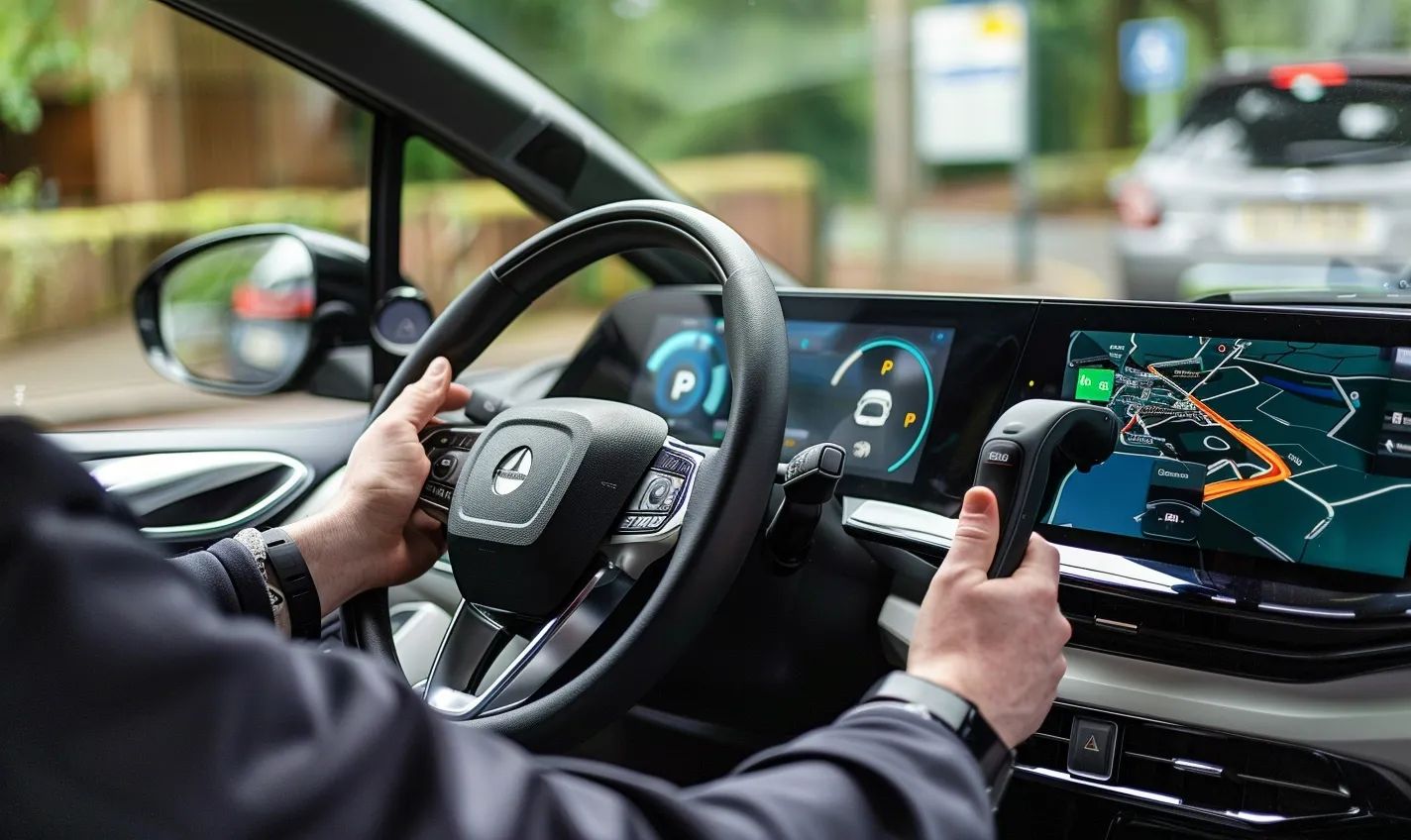
Built-in Safety Mechanisms
Regarding electric vehicles (EVs), safety is a top priority. Manufacturers go to great lengths to ensure that their cars provide a safe driving experience for their customers. From advanced safety features to innovative technologies, some built-in safety mechanisms make electric vehicles a safe choice on the road.
Collision Avoidance Systems
Electric vehicles have collision avoidance systems that use sensors and cameras to monitor the surroundings and detect potential hazards. These systems can help prevent accidents by alerting drivers to obstacles or other vehicles in their blind spots.
Electronic Stability Control
To enhance stability and control, EVs come with electronic stability control systems. These systems employ sensors to detect when a vehicle is skidding or losing control, and they automatically adjust the braking and engine power to maintain stability and prevent accidents.
Enhanced Battery Safety
Electric vehicles have specially designed battery packs positioned low in the vehicle’s chassis. This improves the center of gravity and helps prevent rollovers. Additionally, EVs have built-in safety features that monitor the battery’s temperature and avoid overheating or overcharging, reducing the risk of fire or other dangerous situations.
Advanced Driver Assistance Systems (ADAS)
ADAS features electric vehicles that use advanced technologies to assist drivers in various situations. These systems include:
– Blind Spot Monitoring: Utilizing sensors, this feature alerts the driver when a vehicle is present in their blind spot, reducing the risk of accidents during lane changes.
– Lane Keeping Assist: This feature helps drivers stay in their lane by providing gentle steering assistance and warning them if they begin to drift unintentionally.
– Adaptive Cruise Control: By automatically adjusting the vehicle’s speed to maintain a safe distance from the car ahead, adaptive cruise control enhances safety during long drives or in heavy traffic.
– Forward Collision Warning: This feature uses cameras and sensors to monitor the road ahead and alert the driver if a potential collision is detected, giving them ample time to react and avoid accidents.
– Parking Assist Systems: Electric vehicles often come equipped with parking assist systems, utilizing sensors and cameras to guide parking maneuvers, making parking safer and less stressful.
Electric vehicles boast an array of safety mechanisms that protect the occupants and help prevent accidents in the first place. EVs are at the forefront of automotive safety technology, from collision avoidance systems to enhanced battery safety and advanced driver assistance features. So, the next time you get behind the wheel of an electric vehicle, rest assured that you’ll benefit from these cutting-edge safety features.
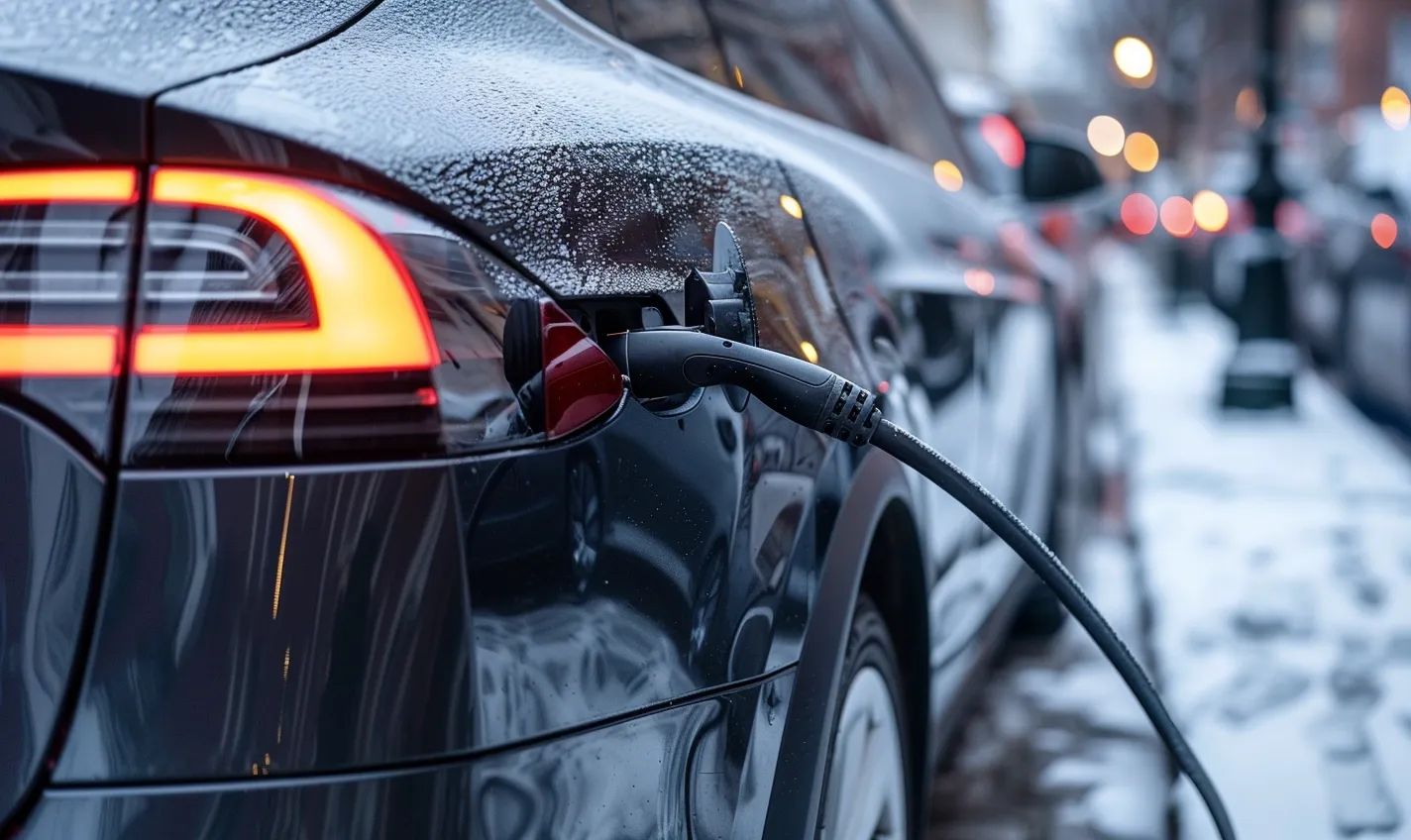
Crash Test Ratings
When choosing a new electric vehicle, safety is a top priority for many drivers. Fortunately, electric cars boast impressive safety features that have been rigorously tested to ensure passenger protection. One of the most important ways to gauge a vehicle’s safety is by reviewing its crash test ratings.
Understanding Crash Test Ratings
Crash test ratings provide valuable information about a vehicle’s ability to protect occupants in an accident. Several organizations, including the National Highway Traffic Safety Administration (NHTSA) in the United States and the Insurance Institute for Highway Safety (IIHS), conduct these tests.
The NHTSA assigns a star rating system ranging from one to five stars, with five being the highest rating. They evaluate the vehicle’s performance in frontal crashes, side crashes, and rollover scenarios. Similarly, the IIHS performs various crash tests and awards vehicles with ratings like Top Safety Pick or Top Safety Pick+, depending on their overall performance. These ratings can help you compare the safety of different electric car models.
Electric Cars and Safety
Electric cars have a unique advantage when it comes to safety due to their design. The heavy battery packs located at the bottom of the vehicle contribute to a lower center of gravity, reducing the risk of rollovers. Additionally, the structural integrity of the battery compartment in electric vehicles adds an extra layer of protection in the event of a collision.
Moreover, the absence of an internal combustion engine in electric cars eliminates the risk of fuel leaks and fires, making them inherently safer in specific crash scenarios. This aspect has been proven in real-world situations, where electric cars have a lower fire risk than traditional gasoline-powered vehicles.
Choosing a Safe Electric Vehicle
When shopping for an electric car, it’s essential to consider its crash test ratings alongside other safety features. While electric vehicles generally perform well in crash tests, opting for models that have earned top ratings from reputable organizations like the NHTSA and the IIHS is always beneficial.
In addition to crash test ratings, don’t forget to explore other safety features that can enhance your driving experience. Many electric vehicles come equipped with driver assistance features, which can help prevent accidents and improve overall safety on the road.
Remember, prioritizing safety should be at the forefront of your decision-making when choosing an electric vehicle. By considering crash test ratings and exploring the various safety features available, you can make an informed choice that prioritizes the well-being of you and your passengers.
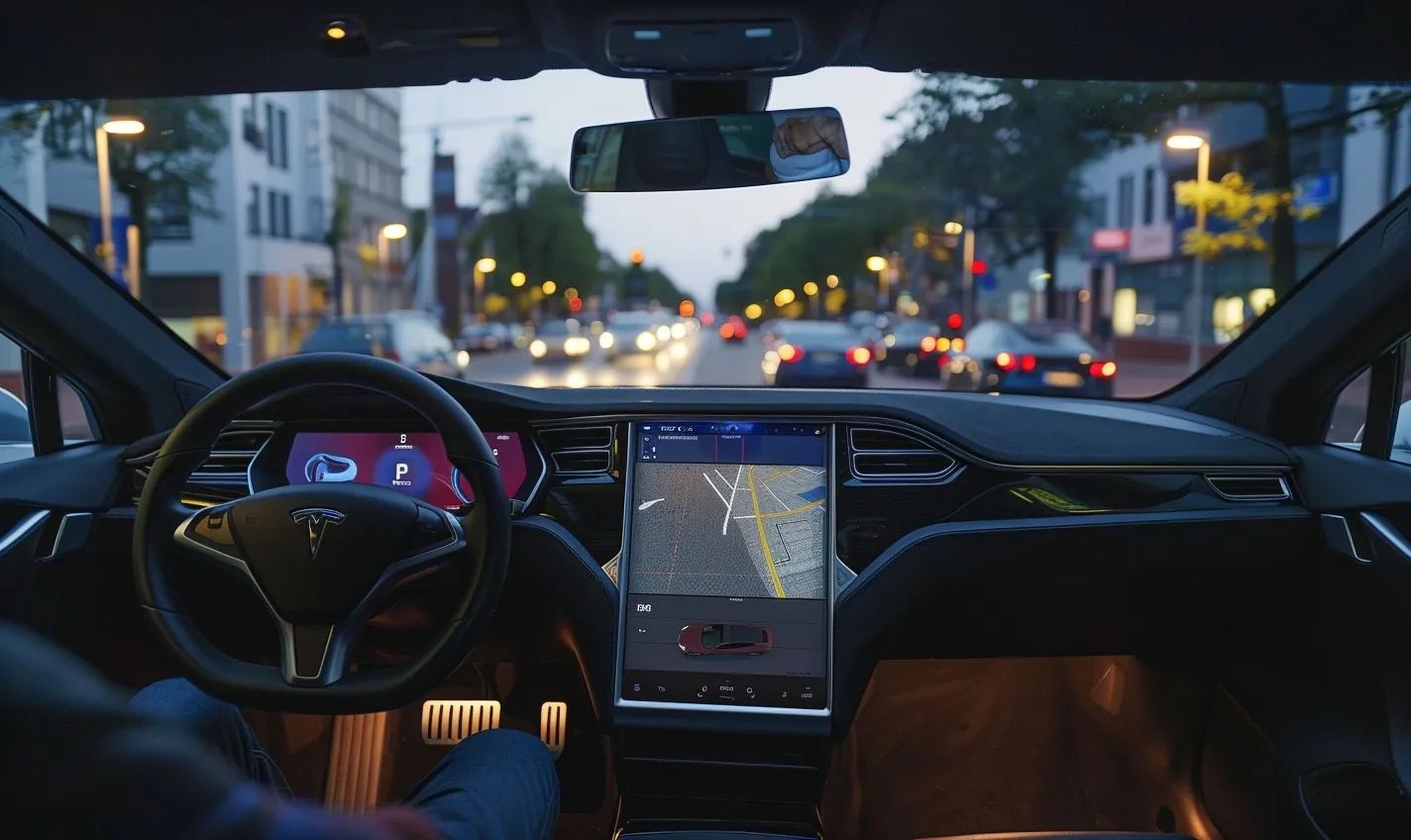
Creep and Hold Mode
Safety is undoubtedly a top priority for manufacturers and drivers when driving an electric vehicle (EV). With built-in safety mechanisms and crash test ratings, EVs have advanced features that enhance safety and provide a smoother driving experience. One such feature is the Creep and Hold mode.
What is Creep and Hold mode?
Creep and Hold mode is a technology designed to simulate the behavior of a conventional gasoline-powered vehicle. In this mode, when the driver releases the brake pedal, the EV will move slowly forward, providing a familiar driving experience akin to an automatic transmission vehicle creeping forward when in gear.
How does it work?
When you engage Creep and Hold mode in your EV, it activates a system that mimics the behavior of a traditional automatic transmission. As a result, the EV will gradually move forward at a slow pace as soon as you release the brake pedal, making it easier for drivers to transition from a gasoline-powered vehicle to an electric one.
Moreover, Creep and Hold mode also provides added convenience in everyday situations. For instance, when maneuvering through tight parking spaces or stop-and-go traffic, the creep feature can help maintain a steady and controlled movement without continuously switching between the brake and accelerator pedals.
Benefits of Creep and Hold Mode
1. Enhanced driving experience: Creep and Hold mode contributes to a smoother and more intuitive driving experience, especially for drivers accustomed to traditional automatic transmission vehicles.
2. Seamless transition: With Creep and Hold mode, EV drivers can quickly adapt to the unique characteristics of electric propulsion while still enjoying some of the familiar driving behaviors of conventional vehicles.
3. Parking convenience: Slowly moving forward without switching between pedals makes parking in tight spots significantly easier, reducing the risk of fender benders and improving overall maneuverability.
4. Increased safety: Creep and Hold mode can enhance safety by providing better control and stability when driving congested traffic.
In conclusion, Creep and Hold mode is just one of many safety and driver assistance features that contribute to making electric vehicles a reliable and convenient transportation option. With its ability to ease the transition from gasoline-powered vehicles, provide smooth maneuverability, and enhance the overall driving experience, this mode demonstrates how EV manufacturers prioritize safety and driver comfort.
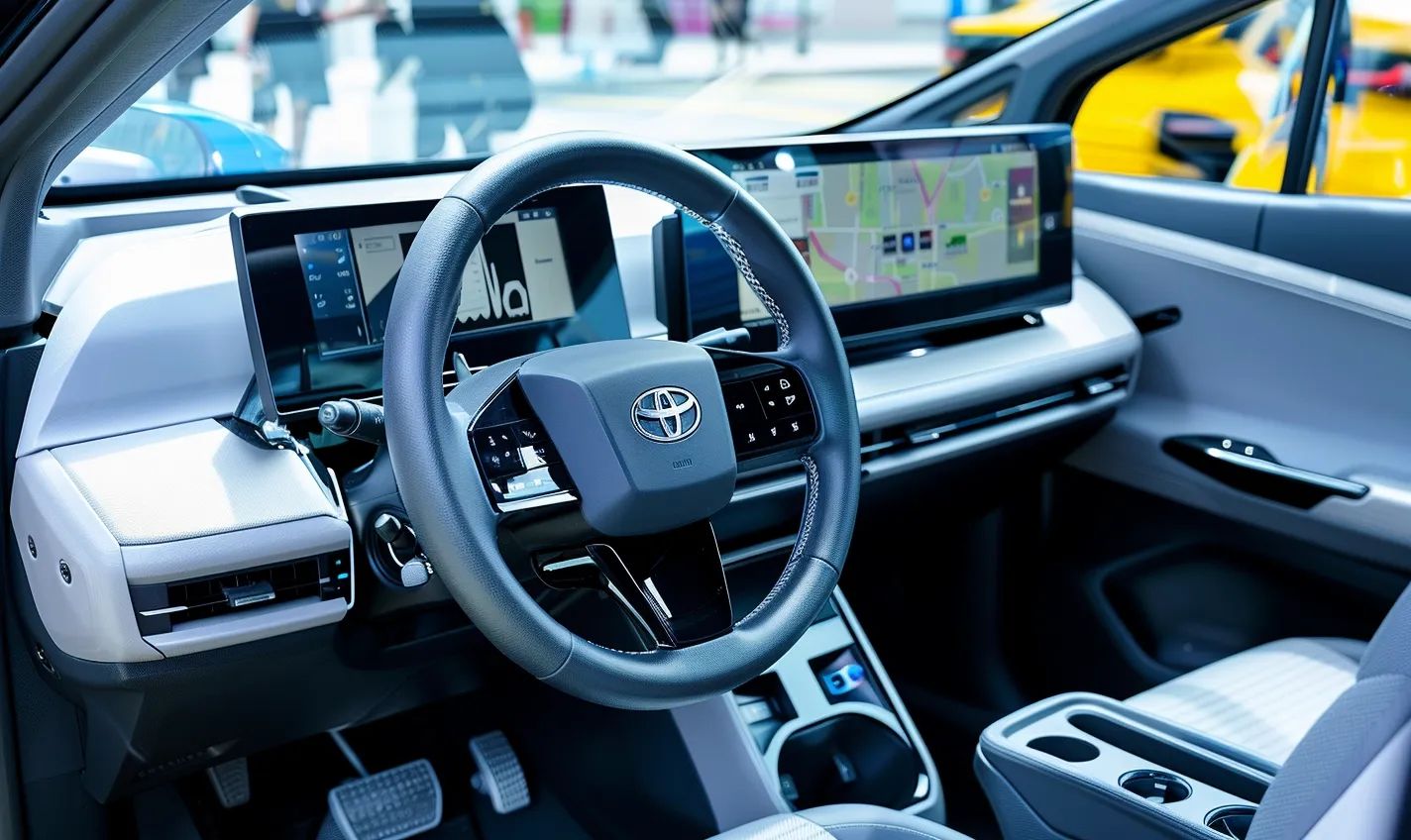
Regenerative Braking System
The regenerative braking system is one of the most innovative features of an electric vehicle (EV). This technology harnesses the power of braking to recharge the battery, improving efficiency and extending the driving range. Let’s dive into how this system works and the benefits it offers.
How does regenerative braking work?
Unlike conventional vehicles that rely solely on traditional friction-based braking systems, EVs utilize regenerative braking to recover kinetic energy that would otherwise be lost. When you apply the brakes in an electric car, the kinetic energy is converted into electrical energy and stored in the battery for later use.
Regenerative braking employs an electric motor to reverse its role and act as a generator during deceleration. The engine produces electricity as you release the accelerator pedal or press the brake pedal. This electric energy is then returned to the battery, replenishing its charge.
The benefits of regenerative braking
The regenerative braking system offers several advantages for electric vehicle owners:
- Increased efficiency: By converting kinetic energy into electrical energy, EVs with regenerative braking can recover a significant amount of power that would otherwise be wasted. This allows for more efficient energy use, enhancing the vehicle’s range.
- Extended battery life: Since regenerative braking reduces the reliance on traditional braking systems, friction-related wear and tear are minimized. This contributes to a longer lifespan for brake components, resulting in reduced maintenance costs.
- Smooth and controlled deceleration: Regenerative braking provides a seamless transition between acceleration and deceleration. The system offers a more balanced and controlled braking experience, making driving in traffic or hilly areas more comfortable.
- Reduced environmental impact: By maximizing energy recovery, regenerative braking helps reduce the overall carbon footprint of electric vehicles. It promotes sustainable transportation by minimizing the need for fossil-fuel-based power generation.
It’s important to note that regenerative braking doesn’t eliminate the need for traditional friction brakes. In certain situations, such as emergency stops, the conventional braking system engages to provide additional stopping power.
As electric vehicles evolve, regenerative braking technology becomes more advanced and efficient. Manufacturers constantly improve this feature to maximize energy recovery and enhance the driving experience.
By embracing regenerative braking, EV owners can experience the benefits of this cutting-edge technology while contributing to a greener and more sustainable future.
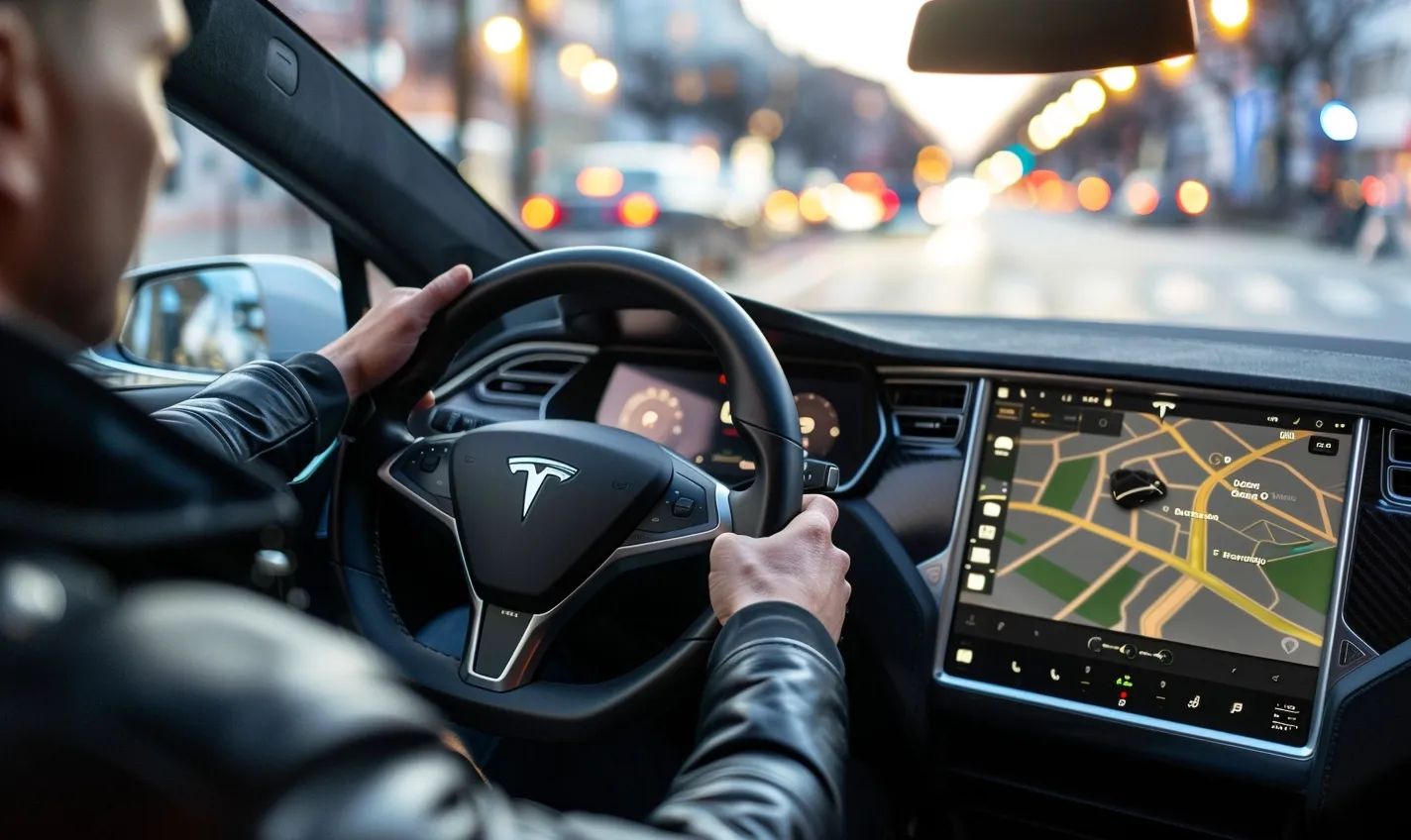
Low Center of Gravity
When driving an electric vehicle (EV), one key feature that sets it apart from traditional gasoline-powered cars is its low center of gravity. This design element plays a significant role in enhancing both safety and driving performance.
Why is a low center of gravity important?
A low center of gravity refers to the position of the vehicle’s weight relative to the ground. In an electric car, the heavy battery pack is usually located at the bottom, lowering its center of gravity compared to a conventional vehicle with its heavy engine.
Here are the reasons why a low center of gravity is essential:
- Better stability: With the weight closer to the ground, an electric car has improved stability, especially during cornering or sudden maneuvers. This stability reduces the risk of rollovers and enhances overall driving control.
- Reduced body roll: The low center of gravity helps minimize body roll, the side-to-side sway that occurs when turning. This gives the EV a more planted feel on the road, providing the driver with increased confidence and comfort.
- Enhanced traction: The low center of gravity enables better weight distribution between the front and rear wheels. This distribution improves traction, allowing the EV to grip the road better, especially in slippery conditions.
- Improved energy efficiency: A lower center of gravity means less energy is required to stabilize the vehicle, resulting in improved energy efficiency and extended driving range for electric cars.
Analogously, the importance of a low center of gravity can be likened to the stability and maneuverability of a skilled gymnast just as a gymnast with a lower center of gravity can efficiently perform complex acrobatic moves, an electric vehicle benefits from its low center of gravity for improved handling and overall safety.
Manufacturers of electric vehicles have embraced this design element to enhance safety, giving drivers and passengers peace of mind on the road. Whether you’re navigating a sweeping curve or avoiding an unexpected obstacle, an EV’s low center of gravity contributes to a safer and more exhilarating driving experience.
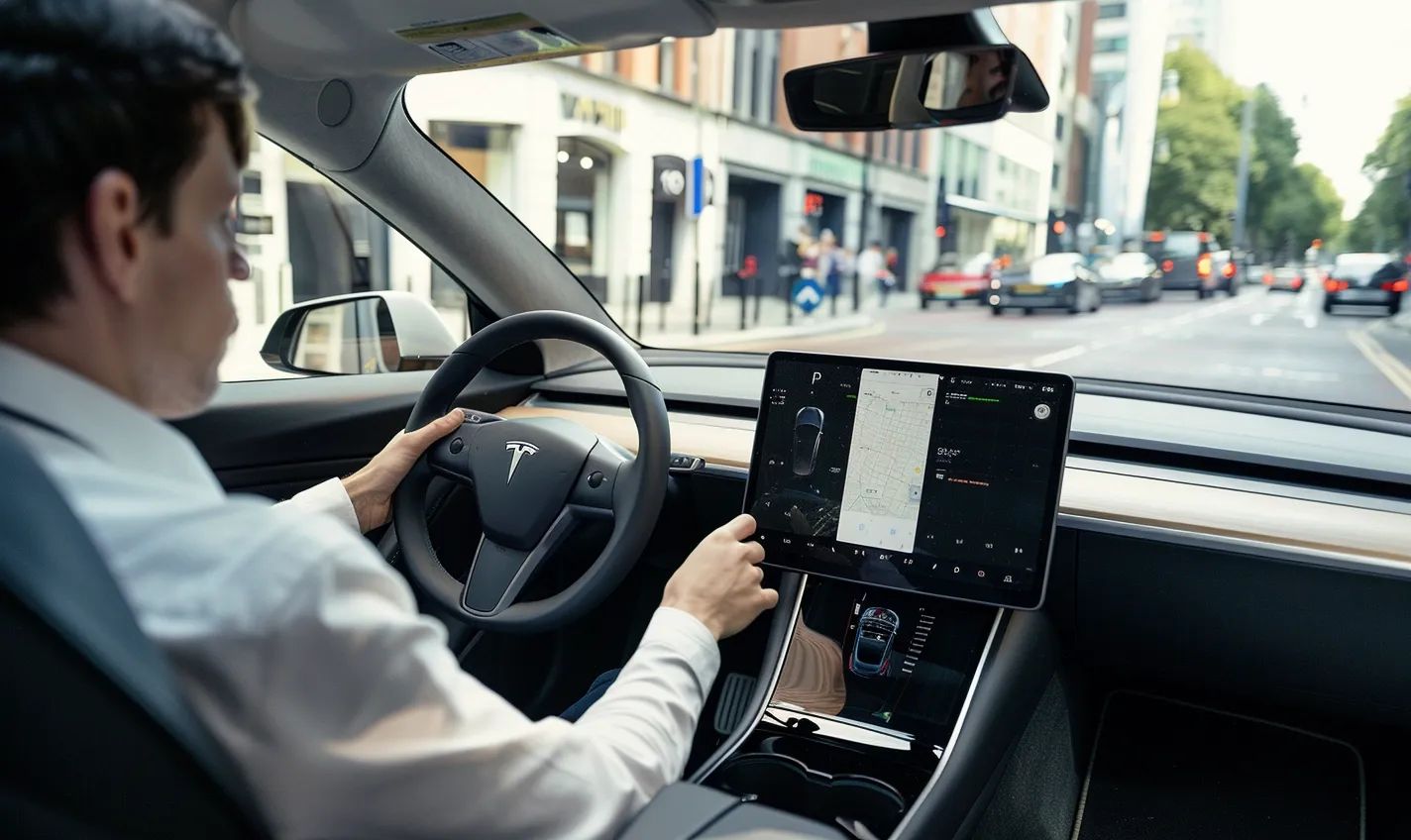
Emergency Response Features
In addition to the various safety mechanisms and driver assistance features, electric vehicles also have emergency response features that prioritize your safety in critical situations. These features are designed to assist you and emergency responders in an accident or emergency. Let’s take a closer look at some of these essential safety features:
Emergency Shut-Off
In a collision or another emergency, electric vehicles have an emergency shut-off feature that instantly cuts off all power to the car. This feature ensures that the high-voltage system is disabled, protecting you and emergency responders from potential electrical hazards.
Post-Collision Safety
Electric vehicles have advanced post-collision safety systems that automatically activate after a crash. These systems, such as the automated emergency braking and deployment of airbags, help mitigate the impact and lessen the chances of further injury.
Remote Assistance
Some electric vehicles are equipped with remote assistance capabilities. In an emergency, you can contact the manufacturer’s support center, and they can remotely access your car to assess the situation. This real-time connection allows them to provide guidance and support until emergency services arrive on the scene.
Emergency Services Notification
In an accident or emergency, electric vehicles can automatically notify emergency services. This feature ensures a quick response time and provides essential details about the accident, such as your vehicle’s location and any airbag deployment information, enabling emergency responders to arrive promptly and assist you effectively.
Emergency Access
Electric vehicles are designed with emergency access features to facilitate rapid extrication in the event of an accident. These features include easily accessible cutoff switches, panel removal points, and standardized visual identification to help rescue personnel quickly identify and safely access the high-voltage components of the vehicle.
It’s essential to familiarize yourself with these emergency response features of your electric vehicle. By understanding how they work and being prepared, you can enhance your safety and the effectiveness of emergency responders in critical situations.
Safety should always be a top priority when driving and operating an electric vehicle. Along with these emergency response features, the built-in safety mechanisms and driver assistance features discussed earlier in this blog post collectively contribute to making electric vehicles a safe and reliable mode of transportation.
Driver Assistance Features for Electric Vehicles
Electric vehicles have gained tremendous popularity recently due to their environmental benefits and cost savings. In addition to these advantages, electric cars have advanced driver assistance features that enhance driving safety. These features offer convenience and provide an extra layer of protection to both the driver and passengers.
Blind Spot Monitoring
One of the most helpful driver assistance features is blind spot monitoring. This system uses sensors to detect vehicles in your blind spots and alerts the driver through visual or auditory signals. This can significantly reduce the risk of accidents when changing lanes, especially on highways where fast-moving vehicles may be challenging to spot.
Lane Keeping Assist
Lane-keeping assist is designed to prevent unintentional lane departure. Using cameras and sensors, this feature detects lane markings and warns the driver if the vehicle starts to drift out of its lane. In some advanced systems, the car can even steer itself back into the lane, providing an added layer of safety on long drives or when experiencing driver fatigue.
Adaptive Cruise Control
Adaptive cruise control takes traditional cruise control to the next level. This feature uses radars and cameras to monitor the distance between your vehicle and the vehicle ahead. It automatically adjusts your speed to maintain a safe following distance, making driving in heavy traffic or long journeys less stressful and more relaxing.
Forward Collision Warning
Forward collision warning systems use sensors to determine the distance between your vehicle and the one in front. If the system detects a potential collision, it will alert the driver through visual and auditory cues. In some cases, the system can even apply brakes autonomously to avoid or mitigate the impact of a collision.
Parking Assist Systems
Parking can be a challenging task, especially in congested areas. Electric vehicles often come equipped with parking assist systems that help you easily park. These systems use cameras and sensors to detect objects around your car and guide you through the parking process. Some systems can even parallel park the vehicle for you, taking the stress out of tight parking spaces.
With these driver assistance features, electric vehicles offer a sustainable and eco-friendly mode of transportation and provide enhanced safety features that make driving more accessible and secure. As technology advances, we can expect even more advanced driver assistance features to be integrated into electric vehicles, further improving the driving experience and reducing the risk of accidents.
Blind Spot Monitoring
Safety should always be a top priority When driving an electric vehicle (EV). That’s why EV manufacturers have incorporated various driver assistance features to enhance the safety of these vehicles. One such feature is Blind Spot Monitoring (BSM), which plays a crucial role in minimizing the risk of accidents while changing lanes on the road.
Driving on crowded highways or in heavy traffic can be challenging, especially when correctly identifying vehicles in your blind spots. In such situations, BSM acts as an extra set of eyes, constantly monitoring the area around your car that you cannot see through your side and rearview mirrors alone.
How does Blind Spot Monitoring work?
Blind Spot Monitoring systems utilize sensors, typically mounted on the side mirrors or rear bumper, to detect the presence of other vehicles in your blind spots. These sensors use radar technology, emitting signals that bounce back when encountering obstacles. By analyzing the intensity and timing of these signals, the BSM system can determine the relative distance and speed of nearby vehicles.
When a vehicle enters your blind spot, the BSM system triggers a visual or audible warning to alert you of its presence. This warning can appear as a light indicator on your side mirror or within your vehicle’s instrument cluster or infotainment system.
The benefits of Blind Spot Monitoring
Blind Spot Monitoring provides several advantages that contribute to overall road safety. Here are some key benefits:
- Reduces the risk of collisions: By alerting you of vehicles in your blind spots, BSM helps to prevent lane-change collisions, reducing the risk of accidents and associated injuries and damages.
- Enhances situational awareness: BSM systems keep you informed about the presence of vehicles around your EV, giving you a better understanding of your surroundings and allowing you to make more informed decisions while driving.
- Reduces driver stress and fatigue: Knowing that you have an extra layer of safety monitoring your blind spots can help alleviate stress and fatigue, allowing you to focus better on the road ahead.
With Blind Spot Monitoring, electric vehicle drivers can enjoy increased confidence and peace of mind while maneuvering through traffic. However, BSM supplements safe driving practices and should never replace the need for proper mirror usage and thorough checks of your blind spots before changing lanes.
Lane-Keeping Assist: Stay in Your Lane with Confidence
Driving an electric vehicle (EV) can be an exciting and environmentally friendly experience. However, as with any car, prioritizing safety is essential. That’s where driver assistance features come into play. Lane Keeping Assist is one feature that can help enhance your safety while on the road.
How Does Lane Keeping Assist Work?
Lane Keeping Assist is designed to prevent accidents caused by unintentional lane departures. Using a combination of sensors and cameras, this feature monitors the vehicle’s position relative to the lane markings on the road. If it detects that you are drifting out of your lane without using your turn signal, it can provide gentle steering assistance to help guide the vehicle back into the correct lane.
Lane Keeping Assist is particularly useful when driver fatigue, distractions, or inattentiveness can increase the risk of veering out of your lane. By providing an extra layer of assistance, this feature can help you stay on track and avoid potential collisions.
The Benefits of Lane-Keeping Assist
Implementing Lane Keeping Assist in your EV can offer several advantages:
- Enhanced Safety: Lane Keeping Assist can significantly reduce the risk of accidents caused by unintentional lane departures. Keeping your vehicle centered within the lanes helps protect you and other road users.
- Reduced Driver Fatigue: Long drives or monotonous stretches of road can lead to fatigue and affect your focus. Lane Keeping Assist provides a helpful reminder to stay within your lane, reducing the likelihood of drifting off due to tiredness.
- Increased Confidence: Knowing your vehicle has safety features like Lane Keeping Assist can boost your driving confidence. It adds an extra layer of protection and peace of mind.
Before relying solely on Lane Keeping Assist, it is essential to remember that this feature is not intended to replace attentive driving. It is crucial always to remain an engaged and alert driver, even when driver assistance features are active.
Regarding electric vehicle safety, driver assistance features like Lane Keeping Assist play a vital role. They provide an extra level of security, helping to mitigate the risk of accidents caused by human error or distractions. So, whether you’re embarking on a long highway journey or commuting through city streets, Lane Keeping Assist can help keep you safely in your lane.
Adaptive Cruise Control
Experience an Effortless Drive with Adaptive Cruise Control
Imagine driving down a long stretch of highway, and instead of constantly adjusting your speed to match the traffic flow, your car effortlessly does it for you. With adaptive cruise control, this is not a mere daydream but a reality. Explore this driver assistance feature that enhances your electric vehicle driving experience.
Adaptive cruise control (ACC) is a cutting-edge technology that uses sensors and advanced algorithms to maintain a safe distance from the vehicle in front of you. ACC automatically adjusts your speed or even applies brakes if necessary, ensuring a smooth and stress-free journey. Let’s explore a few key benefits of this remarkable feature:
Safety First, Always
ACC prioritizes safety by offering a reliable buffer between your car and the vehicle ahead. It eliminates the need for constant acceleration and deceleration, reducing the risk of collisions caused by sudden changes in traffic flow. Whether you encounter a heavy traffic jam or a fast-moving highway, this feature adapts seamlessly to any driving conditions, keeping you and your passengers safe.
Efficiency at Its Best
By maintaining a consistent speed and spacing, ACC helps optimize your electric vehicle’s energy consumption. This reduces unnecessary acceleration and braking, which are known to impact the efficiency of EVs. As a result, you get to maximize your driving range and minimize time spent recharging your vehicle, making your electric journey even more efficient and convenient.
Driving Made Easier
With ACC, driving becomes effortless and less fatiguing. You no longer need to monitor your speed or adjust your acceleration constantly. This reduces cognitive load and enhances your driving experience, allowing you to focus on enjoying the journey rather than worrying about maintaining the right speed.
Final Thoughts
Adaptive cruise control is an indispensable driver assistance feature that not only helps improve safety but also offers enhanced comfort and efficiency. By letting your electric vehicle do the heavy lifting regarding speed control, you can enjoy a seamless and stress-free driving experience.
Stay tuned as we explore the world of electric vehicle safety and driver assistance features, providing you with the insights you need to make the most of your electric driving adventure.
Forward Collision Warning
In recent years, there has been a significant increase in the adoption of electric vehicles (EVs) due to their environmental benefits and lower operating costs. As more people transition to electric cars, it is crucial to understand the unique safety features of these vehicles. One such safety feature is the Forward Collision Warning (FCW) system.
How Does Forward Collision Warning Work?
The FCW system utilizes sensors and cameras to monitor the distance between your vehicle and the one in front. It analyzes the relative speed and trajectory of the cars and can detect if a collision is imminent. When the system detects a potential collision, it alerts the driver through visual and auditory cues, giving them time to react and avoid the accident.
The FCW system relies on advanced algorithms and machine learning to accurately predict potential collisions. It considers several variables, such as the vehicle’s speed, braking distance, and road conditions, to provide timely warnings to the driver.
The Importance of Forward Collision Warning
Accidents caused by rear-end collisions are unfortunately common, and the FCW system plays a crucial role in reducing their occurrence. Providing early warnings to drivers allows them to take corrective actions, such as braking or changing lanes, to prevent a collision. This safety feature is especially valuable in congested traffic or driving at high speeds.
With the increasing popularity of electric vehicles, known for their swift acceleration, the FCW system becomes even more crucial. The instant torque of an electric motor can catch even experienced drivers off-guard, and having a system that can anticipate and warn of potential collisions is invaluable.
Limitations and Considerations
While the FCW system is highly effective, it is essential to understand its limitations. The system relies on clear road visibility and may have difficulty detecting obstacles in adverse weather conditions or situations with poor lighting. It also may be unable to detect stationary objects or pedestrians in specific scenarios. Therefore, drivers must remain attentive and not rely solely on driver assistance features.
Parking Assist Systems
When it comes to driving and operating an electric vehicle, safety should always be a top priority. In addition to the built-in safety mechanisms and driver assistance features we’ve covered, electric cars often come equipped with parking assist systems to make parking a breeze. These advanced technologies provide drivers added convenience and peace of mind when maneuvering tight spaces.
Sensors and Cameras for Precise Parking
Electric vehicles are often equipped with sensors and cameras strategically placed around the car to assist with parking. These sensors can detect obstacles, curbs, and other vehicles, ensuring drivers have a clear view of their surroundings. The cameras provide a live feed to the vehicle’s infotainment system or rearview mirror, making it easier to navigate into parking spots more precisely.
The parking assist system can help drivers parallel park their electric vehicles effortlessly. Scanning the environment allows the system to assess whether a parking space is large enough and guide the driver on when and how to maneuver into the spot. This is particularly helpful for drivers who struggle with judging distances or have difficulty with spatial awareness.
Automated Parking Functions
Some electric vehicles go a step further and offer automated parking functions. With this feature, the parking assist system takes control of the steering while the driver controls the acceleration and braking. The vehicle uses its sensors and cameras to scan the surroundings, calculate the best parking trajectory, and execute the parking maneuver flawlessly.
Automated parking functions can be especially useful in crowded urban areas with limited parking spaces, and parallel parking can be time-consuming and nerve-wracking. With the push of a button, the electric vehicle will do the parking for you, minimizing the risk of scratches or dings and reducing the stress associated with parking in tight spots.
The Benefits of Parking Assist Systems
Parking assist systems offer numerous benefits for electric vehicle drivers, including:
- Improved parking accuracy and precision
- Reduced risk of accidents and collisions during parking maneuvers
- Enhanced convenience, particularly in crowded urban areas
- Minimized stress and anxiety when parking in challenging situations
Overall, parking assist systems are a valuable addition to electric vehicles, making parking more accessible, safer, and more efficient. As these technologies evolve, drivers can look forward to even more advanced features that enhance the parking experience.
Conclusion
In conclusion, driving and operating an electric vehicle (EV) has numerous safety features and driver assistance technologies that enhance the overall driving experience. These features prioritize the safety of occupants and contribute to a more sustainable and efficient mode of transportation.
From the built-in safety mechanisms to the crash test ratings, EVs are designed to provide a secure driving environment. The creep and hold mode, regenerative braking system, and low center of gravity all work together to ensure stability and control on the road. Additionally, emergency response features are integrated into EVs to address any potential accidents or emergencies promptly.
Furthermore, driver assistance features elevate the driving experience by adding an extra layer of convenience and safety. Blind spot monitoring eliminates blind spots and enhances awareness of surrounding vehicles. Lanekeeping assists drivers in staying within their lanes, reducing the risk of collisions caused by drifting. Adaptive cruise control ensures a safe following distance, adjusting speed accordingly. Forward collision warning provides alerts to prevent potential collisions. Lastly, parking assist systems simplify the often challenging task of parking.
These features significantly contribute to the growing popularity of electric vehicles, making them an attractive option for eco-conscious individuals. The combination of advanced safety mechanisms and driver assistance technologies ensures the well-being of occupants and makes driving an EV a more enjoyable and stress-free experience.
It is important to note that while these safety and assistance features are highly beneficial, drivers must remain attentive and responsible while operating an electric vehicle. Understanding how these features work and familiarizing oneself with their functionalities is essential to utilize their potential and ensure a safe driving experience fully.
With continuous technological advancements and the increasing demand for sustainable transportation, electric vehicles have become integral to the automotive industry. As more manufacturers prioritize safety and driver assistance in their EV models, the future of electric mobility looks promising.
So, if you’re considering switching to an electric vehicle, rest assured that you’ll be driving a mode of transportation that puts safety at the forefront while offering many driver assistance features to enhance your driving experience.
Conclusion
As we conclude our discussion on electric vehicle safety and driver assistance features, it’s clear that these technological advancements have revolutionized the way we drive and operate cars. Electric vehicles come packed with various safety features that provide peace of mind to drivers, passengers, and pedestrians alike.
Electric cars offer a safe and efficient driving experience, from advanced collision-avoidance systems to sophisticated monitoring technology. These features reduce the risk of accidents and help drivers in various situations, making them more confident on the road.
Driver assistance features like adaptive cruise control, blind spot monitoring, and lane departure warning systems provide extra protection and convenience. Whether commuting to work or embarking on a long road trip, these features can help prevent accidents and improve your overall driving experience.
Electric vehicles’ regenerative braking system and low center of gravity also contribute to enhanced stability and control, making them less prone to rollovers and skids. The silent operation of electric cars also reduces noise pollution, making our roads quieter and more pleasant to drive on.
In conclusion, electric vehicles’ safety features and driver assistance technologies have redefined automotive safety standards. As the popularity of EVs continues to soar, it’s evident that the industry is committed to prioritizing the safety of drivers, passengers, and pedestrians. By embracing electric vehicles, we can contribute towards a greener and safer future on the roads.
Frequently Asked Questions (FAQs)
-
What safety features are available in electric vehicles?
Electric vehicles (EVs) come equipped with various safety features, including advanced driver assistance systems (ADAS), such as collision warning, lane departure warning, blind spot monitoring, and adaptive cruise control. They also have reinforced frames and advanced airbag systems to ensure maximum safety for the occupants.
-
How does regenerative braking work in an electric car?
Regenerative braking is a feature in electric vehicles where energy is recovered and converted into electricity when the brakes are applied. The electric motor acts as a generator, converting the kinetic energy into electrical energy, which is then stored in the battery for later use. This helps increase the vehicle’s range and reduces wear on the traditional braking system.
-
Are electric cars more prone to fires?
Electric vehicles have extensive safety measures in place to prevent fires. The battery packs are designed to be highly resistant to thermal events, and many EVs have dedicated cooling systems to maintain optimal temperature. While it is true that fires can occur in any vehicle, electric cars are not inherently more prone to fires than conventional gasoline-powered cars.
-
Can electric vehicles self-park?
Yes, many electric vehicles come equipped with self-parking features. With the help of sensors and cameras, the car can detect available parking spots and assist in parallel or perpendicular parking. The driver must control the accelerator, brake, and gear selection while the vehicle handles the steering.
-
Are there any emergency features in electric cars?
Electric vehicles often have emergency features such as automatic crash notifications, SOS call buttons, and emergency assistance systems. These features help contact emergency services and provide the vehicle’s location in case of an accident or emergency.
-
How does the driver assistance system work in an electric car?
Driver assistance systems in electric vehicles use sensors, cameras, and radar to monitor the environment and assist the driver in various ways. These systems can warn of potential collisions, help maintain the vehicle in the correct lane, and adjust the vehicle’s speed based on traffic conditions. They are designed to enhance safety and provide a more convenient driving experience.
